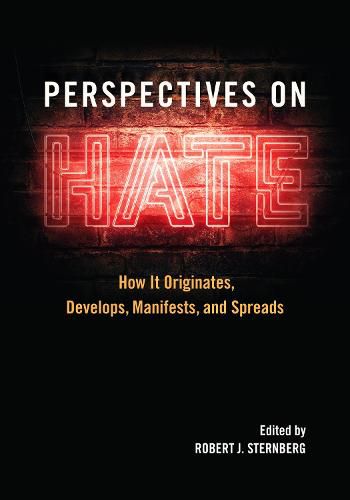Readings Newsletter
Become a Readings Member to make your shopping experience even easier.
Sign in or sign up for free!
You’re not far away from qualifying for FREE standard shipping within Australia
You’ve qualified for FREE standard shipping within Australia
The cart is loading…






With hate crimes on the rise, it is more important than ever to understand how hate originates, develops, manifests, and spreads - and how it can be counteracted. In this book, renowned psychologist Robert J. Sternberg assembles a diverse group of experts to examine these central issues from the perspectives of multiple disciplines. The book is anchored by Sternberg’s FLOTSAM theory, which identifies key conditions that enable the development and transmission of hate, including fear, license, obedience to authority, trust, sense of belonging to a valued group, amplification of arousal, and modeling. Chapters work through various manifestations of hate: hate as a thought, a feeling, or an action; forms of hate that are rooted in group bias, or that stem from a single relationship; and hate that varies in intensity, from the mundane to the extreme. Authors also explore the various cognitive and emotional processes at work, as well as the political motivations that can spark violent acts of hate. The book also considers the role of hate crime legislation and the relationships among hate speech, free speech, and group violence.
$9.00 standard shipping within Australia
FREE standard shipping within Australia for orders over $100.00
Express & International shipping calculated at checkout
With hate crimes on the rise, it is more important than ever to understand how hate originates, develops, manifests, and spreads - and how it can be counteracted. In this book, renowned psychologist Robert J. Sternberg assembles a diverse group of experts to examine these central issues from the perspectives of multiple disciplines. The book is anchored by Sternberg’s FLOTSAM theory, which identifies key conditions that enable the development and transmission of hate, including fear, license, obedience to authority, trust, sense of belonging to a valued group, amplification of arousal, and modeling. Chapters work through various manifestations of hate: hate as a thought, a feeling, or an action; forms of hate that are rooted in group bias, or that stem from a single relationship; and hate that varies in intensity, from the mundane to the extreme. Authors also explore the various cognitive and emotional processes at work, as well as the political motivations that can spark violent acts of hate. The book also considers the role of hate crime legislation and the relationships among hate speech, free speech, and group violence.